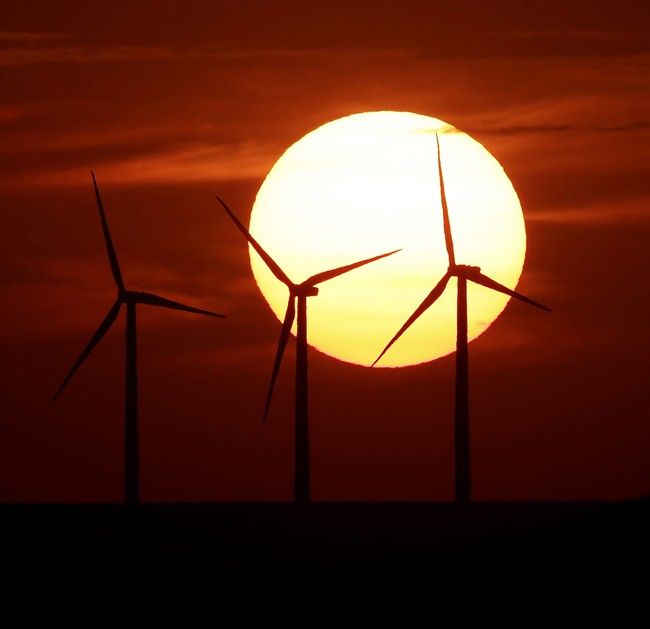WINNIPEG – The plug has been pulled on a proposed 175-megawatt wind farm that proponents say would have added more alternative energy to Manitoba and be a boon to area farmers.

Ed Pakulak, the Canadian spokesman for U.S.-based Competitive Power Ventures, said Manitoba Hydro is focused on hydroelectric power.
The planned wind farm, next to the 63-wind turbine wind farm at St. Leon, had been in the works for about three years, but never advanced past the proposal stage.
READ MORE: Ikea buys wind farm near Pincher Creek
Tentative agreements were in place with about 25 landowners for turbines on their properties and with the RM of Thompson.
CPV’s decision to pull out of Manitoba comes as the province’s Public Utilities Board studies a bid by Hydro to build the Keeyask and Conawapa generating stations and a new transmission line to the United States.
Hydro and the Selinger government say the three projects will cost about $20 billion, but in time should pay for themselves with increased electricity exports to the American Midwest, which is seeing a number of older coal plants retired.
- Life in the forest: How Stanley Park’s longest resident survived a changing landscape
- ‘Love at first sight’: Snow leopard at Toronto Zoo pregnant for 1st time
- Carbon rebate labelling in bank deposits fuelling confusion, minister says
- Buzz kill? Gen Z less interested in coffee than older Canadians, survey shows
Landowner Philip Barclay is disappointed that the wind farm won’t go ahead, and he wonders if Hydro can manage two dams.
“I don’t know if they’re biting off too much with two dams,” Barclay said. “If they went down to one dam and a bit of alternative energy like wind power it might be a smarter route to go.”
In filings to the PUB, Hydro has said wind generation isn’t dependable enough to expand it beyond the St. Leon and St. Joseph wind farms, which together are capable of delivering 233 MW of power to the grid.
“You can’t count on the wind blowing at the time you need the energy,” Hydro consultant Dean Murphy told the PUB at a recent hearing.
Hydro also says it has examined the performance of the St. Leon and St. Joseph wind farms during the peak-load hour of each month from June 2007 to May 2013. It found the minimum wind generation, during the peak-load hour each month, was zero or near zero at least once each month.
“Manitoba Hydro has determined that the capacity value of wind generation within Manitoba to meeting the winter peak load is zero,” the Crown corporation said in a report to the PUB.
However, Manitoba’s experience with wind has not stopped expansion of turbines in North Dakota and Minnesota and provinces such as Quebec and Ontario. However, much of the recent wind-generation expansion in both countries is subsidized by government.
READ MORE: Giant wind farm proposed for southern Vancouver Island
News of CPV’s decision came a day before former NDP energy minister Tim Sale appears at the PUB to promote more wind generation and tougher energy conservation instead of the expense and risk of two new dams.
Sale, in a written submission already tabled, said Hydro is “uncritically and somewhat hysterically opposed to wind generation.”
Citing a 2010 study done for Hydro, Sales said at no significant costs, Hydro could install up to 1,200 MW more wind power in the province. The net capacity of Conawapa is 1,485 MW. Its estimated cost is $10.7 billion.
“In Manitoba’s current electric power situation, do the two alternatives – dams or a combination of wind, geothermal and aggressive (domestic conservation) both provide the power we need for the next decade? The answer is clearly yes,” Sale said in his submission.
“When risk is significant, which Hydro agrees is the case here, and the major alternatives are either long-term high cost single projects, or scalable short- and medium-term projects, choose the lower risk one.”



Comments